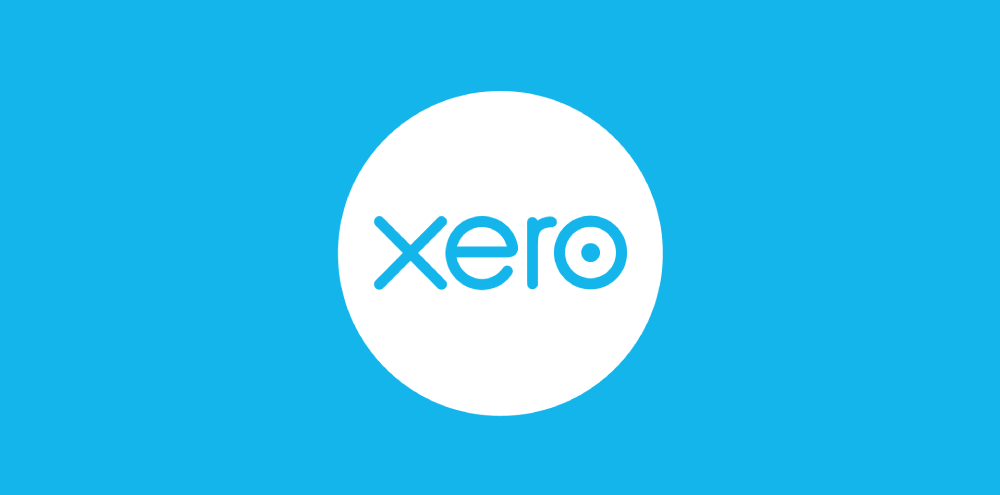The value of cash flow forecasting during a crisis
May 11, 2020

A business cash flow forecast is not a crystal ball. But it will give you vital business intelligence to help you scenario-plan, search for cost-savings and look for strategies that will preserve your cash flow position. During the ongoing COVID-19 crisis, many sectors are seeing income either disappear completely or drop to dangerous levels. To be able to navigate the future path of your cash flow, you need to start forecasting – so you can map out your financial position over the coming months and can take the appropriate action to safeguard your cash position.
Forecasting your future cash pipeline
Projecting your cash flow pipeline forwards during a crisis is vital. Having access to detailed forecasts helps you to scenario-plan, search for cost-savings and look for strategies that will preserve your cash flow position. Remaining in control of the cash coming into (and going out of) the business is the real focus, so you can accurately predict your financial position and can resolve any issues.
How to get more from your forecasting
- Run regular forecasts – the financial landscape is changing on a daily basis at present. Variables and external drivers are changing each day, so it’s vital that you run frequent forecasts and react swiftly to any projected cash issues as they become apparent.
- Explore the right revenue streams – most sectors will have seen their face-to-face sales drop to absolute zero since lockdown restrictions came into place. To overcome this, there’s a real imperative to explore revenue streams and new opportunities for income. An example of this is coffee shops that now sell roasted beans online or have started doing online ordering and deliveries. The idea is to find ways to increase the money that’s coming in the door and balance out your unavoidable expenses.
- Get proactive with cost-cutting – if you can reduce cash outflows to a minimum, that will have a real impact on the health of your future cash flow. Pare back your operations and aim to reduce things like unnecessary software subscriptions, or over-ordering of basic supplies. Negotiating cheaper rates with suppliers, if possible, will also help.
- Review your staffing needs – now’s not the time to make anyone redundant, but you can look at ways to reduce the costs of staffing and resourcing. Reducing working hours or redeploying staff in different roles are all options that reduce payroll costs, while also looking after your staff’s welfare.
- Run a variety of scenarios – changing the financial drivers in your forecast model allows you to scenario-plan different strategies and options. Many of these will be in a long-term plan when restrictions ease. Scenario-planning lets you answer questions and will give you some hard evidence on which to base your decision-making and strategic outlook over the coming months.
- Look at various ways to access funding – if forecasts show a giant cash flow hole coming up, you’re going to need additional funding to get through this crisis. We can assist your business to investigate funding opportunities from Government subsidies, grants, banks and other loan providers.
- Use the best cash flow forecasting software – we use Spotlight Reporting to produce visual representations of our clients' business cash flow situation now and in the future. Spotlight Reporting integrates directly with your Xero account, giving a drilled-down view of how your cash inflows and outflows will pan out over the coming months – information that will inform and justify the decisions you make during these extremely challenging times.
Talk to us about setting up cash flow forecasting
Forecasting is an important step to give you the business intelligence to support your decision making. We are able to offer either one-off, or ongoing cash flow forecasts, customised to your business' needs.
Get in touch and get control over your cash flow.

Uncertainty can be a major threat to your financial planning strategy. Being unsure of what lies around the corner makes it difficult to make those important financial decisions around operational budgets, investment and growth funding.But by using forecasting and scenario-planning, you make it easier to manage your finances and reduce some of the financial uncertainty. Looking to the future with your financials Analysing your cashflow statements, profit and loss reports and quarterly management accounts gives you an indication of where you’ve been as a business. But these reports don’t tell you much about where you’re going, and what your financial future may look like. By looking forward, rather than backward, you can start to get a better idea of the landscape that lies ahead – including future cashflow, revenue, profits and operational budgets. Five key techniques you can use to reduce your financial uncertainty Cashflow forecasts: Cash is king, so having a detailed overview of your cashflow trajectory is vital. With cashflow forecasting apps, like Fathom, you can predict your cash availability and spot potential cash shortfalls – while there’s still time to plug the hole. By cutting expenses or seeking short-term funding, you can keep the business in a positive cashflow position. It’s this forecasting and foresight that keeps you trading, despite the uncertainty in the market. Revenue forecasts: Knowing the future patterns in your sales and revenue data helps you keep your income stable. Revenue forecasting apps, like Clari analyse your sales data, revenue trends and market shifts to anticipate fluctuations in your revenue. Armed with this future view of your potential revenue, you can adapt your pricing, invest in more marketing and make your income more consistent. Scenario-planning: There’s always more than one potential outcome of any business situation. Having a plan B (or C, D and E) allows you to understand the multiple potential possibilities – and plan for them. An app like Modana helps you model potential ‘what-if’ scenarios, so you can see the possible outcomes of an economic downturn or disruption to your supply chain disruptions. This kind of scenario-planning makes it easier to make contingency plans and mitigate the potential risks. Profit projections: Being a profitable enterprise is important for a number of reasons. It shows lenders you’re a low-risk borrower, allows you to invest in the business and drives your dividend payments. A tool like Teamwork helps you track your performance and estimate future profitability, factoring in variable costs, sales and market changes. This helps you determine your price point, drive cost-cutting measures or make investment decisions that keep the profits rolling in. Budget forecasts: Tracking and forecasting your budget performance keeps your expenses in check. Budgeting apps, like Jirav, help you build dynamic budgets and remain on budget to achieve your financial goals. Budget forecasts help you track your performance, control your expenses and cut any unnecessary spending, keeping you on track with your agreed budget. Making your financial future clearer and easier to navigate With so many ups and down in economic conditions and the costs of raw materials and labour, getting serious about financial forecasting really is a must. Come and talk to us about the key areas of financial uncertainty in your business – and find out how we can guide you through these uncertain times and out the other side.

Are your contacts in Xero getting a little out of control? If the answer is yes it might be time for some Xero housekeeping! Duplicate contacts can easily be merged. All the financial data is merged into a single contact, and the duplicate is then archived. This allows you to keep all contact information and related transactions together, instead of across multiple records for the same contact. When you merge duplicate contact records, no transactions are deleted (this includes invoices, bills, and other financial transactions). The transaction details are added to the activity details of the contact you keep. To merge two or more contacts: 1. In the Contacts menu, select All contacts . 2. In the search field, start typing the name of the contact you want to merge. 3. Once you are satisfied the contacts are associated with the same company, select the checkbox for each contact you want to merge. Do not select the contact you want to retain . Ensure that the contact you keep has the correct bank account details. 4. Click Merge , then click Confirm merge . The merged contacts will be archived and all associated transactions will be merged into the activity details of the contact you keep. Note: You can restore a merged contact if necessary by going to the Archived section (highlighted in the image below in the top toolbar). In this section, simply click on the contact and then click the Restore button located on the right-hand side of the page.

View our April 2025 General Ledger: - Happy Easter & AAF Out-Of-Office Dates - 2025 Annual Accounts Questionnaires - Reducing the Uncertainty: Financial Forecasting and Planning - Xero Tip of the Month: How to Merge Duplicate Contact Records - Welcome to the Team: Chrissy Williams - Tax Question of the Month: Withholding Tax Deduction on Payments Made to a Contract Painter - IRD Upcoming Tax Payment Dates https://public2.bomamarketing.com/email/jXba

Whether it’s refilling your petrol tank or paying at the supermarket checkout, the higher cost of living is hitting every household hard. Across the world, everyday essentials have surged in price across the OECD. What can you do to try to keep up with the increasing cost of living? Here are our 12 top tips: Look for ways to earn more: Grow your business’s profitability (talk to us about improving your profits) or ask for a pay rise. Take in a boarder or flatmate. Sell your unwanted items online. Cut back where you can: Prepare more meals at home and spend less at cafés and restaurants. Create a budget and keep your spending under control. Reduce the amount of meat you buy. Find ways to use your car less. Cancel your credit cards and your buy now pay later accounts. Review all your ongoing expenses like utilities, insurance and subscriptions – cancel, switch providers or get better deals. Invest in your future: Think about investing in ways that are likely to outperform inflation – both shares and the property market have historically provided returns higher than inflation. Start a new business, launch a new product or service, or try a side hustle. Teach yourself about money and finances using free tools online and books from the library. Better money management helps you make the most of what you’ve got. While inflation has slowed, it is still estimated to be in the 2 - 3% range this year on top of the recent increases. By increasing your income by 4%, and making up additional through savings, while also investing for the future, you can come out on top of inflation. Worried about money? Talk to us. We have years of experience through many economic cycles, including previous periods of high inflation – and we’re always here to help.

We Did It! Hello, New Financial Year! Congratulations on making it through another EOFY (1 April 2024 – 31 March 2025)! Now is the perfect time to reset, refocus, and step into the 2025/26 financial year with confidence and clarity. A new financial year brings fresh opportunities to elevate your financial strategy. Whether you're looking to grow your business, streamline operations, or optimise tax efficiency, All Accounted For is here to support you every step of the way. Now is the ideal time to set your financial goals for the year ahead. Contact us today at 04 970 1182, and let’s work together to make this your most successful financial year yet!

The clock is ticking! The end of the financial year is just days away – March 31st, 2025. It’s time to wrap up those last-minute tasks before the deadline. Here’s a quick checklist to help you stay on track and ensure a smooth year-end close: • Review financial statements – Ensure accuracy of income, expenses, and invoices. • Reconcile bank accounts – Align all accounts and credit cards. • Chase overdue payments – Collect any outstanding dues. • Prepare tax documents – Gather receipts, income records, and deductions. • Check your budget – Update for year-end adjustments. • Inventory check – Take stock and update records. • Assess investments – Evaluate performance and adjust if needed. • Plan for next year’s goals – Set financial and business targets. • Store key documents – Safeguard important records for next year. Need help? Please get in touch if you have any questions or require any additional support pre EOFY: admin@aafl.nz or 04 970 1182.

Just a reminder that March 31, 2025, is stocktake day for businesses holding more than $10,000 in stock. If your business is closed over the weekend, this could be the opportune time to perform your stocktake. To assist you in ensuring a precise and efficient stocktake, we've curated some helpful tips for your consideration as you prepare for your inventory count. You can find detailed insights at the following link: https://public2.bomamarketing.com/email/Nx7Y If you have any questions or require further assistance in getting ready for your stocktake, please don't hesitate to reach out to us at 04 970 1182.

Managing bills just got easier! With Xero’s new Quick View functionality, you no longer need to click through individual bills or juggle multiple tabs! Now, you can view and approve bills directly from the Quick View screen. This streamlined approach is a more efficient way to stay on top of your school’s payables—ideal for schools with multiple bills to process each month. Save time, reduce hassle, and ensure timely approvals with this handy feature! To access this feature, simply click the icon on the far left under the "View" tab next to the bill you want to check, and voilà — the transaction details will pop up right there! To approve a bill, go to the "Awaiting Approval" tab, select the bill/s you want to approve by ticking the box on the left-hand side, then click the 'Approve' button.

View our March 2025 General Ledger: - 2025 Annual Accounts Questionnaires - Staff Changes and Guarantee for 2025 - Terminal Tax Reminder - Due 7 April 2025 - Minimum Wage to Rise From 1 April 2025 ($23.50 per hour) - Xero Tip of the Month: The Quick View Functionality Tool - Welcome to the Team: John & Hassan - Tax Question of the Month: Treatment of Tax Losses When PAYE and GST Liabilities Are Written Off - IRD Upcoming Tax Payment Dates https://public2.bomamarketing.com/email/eyxE





